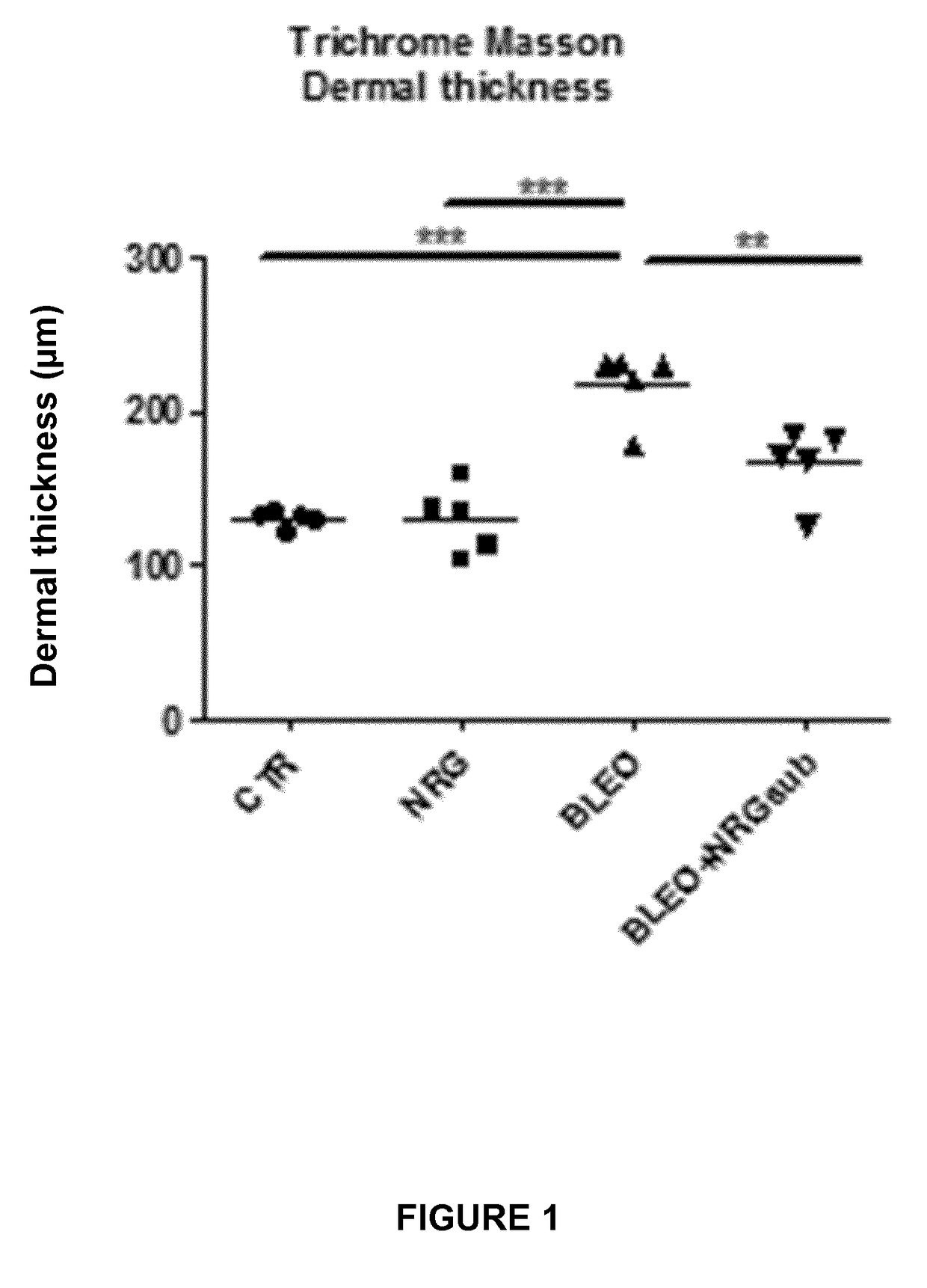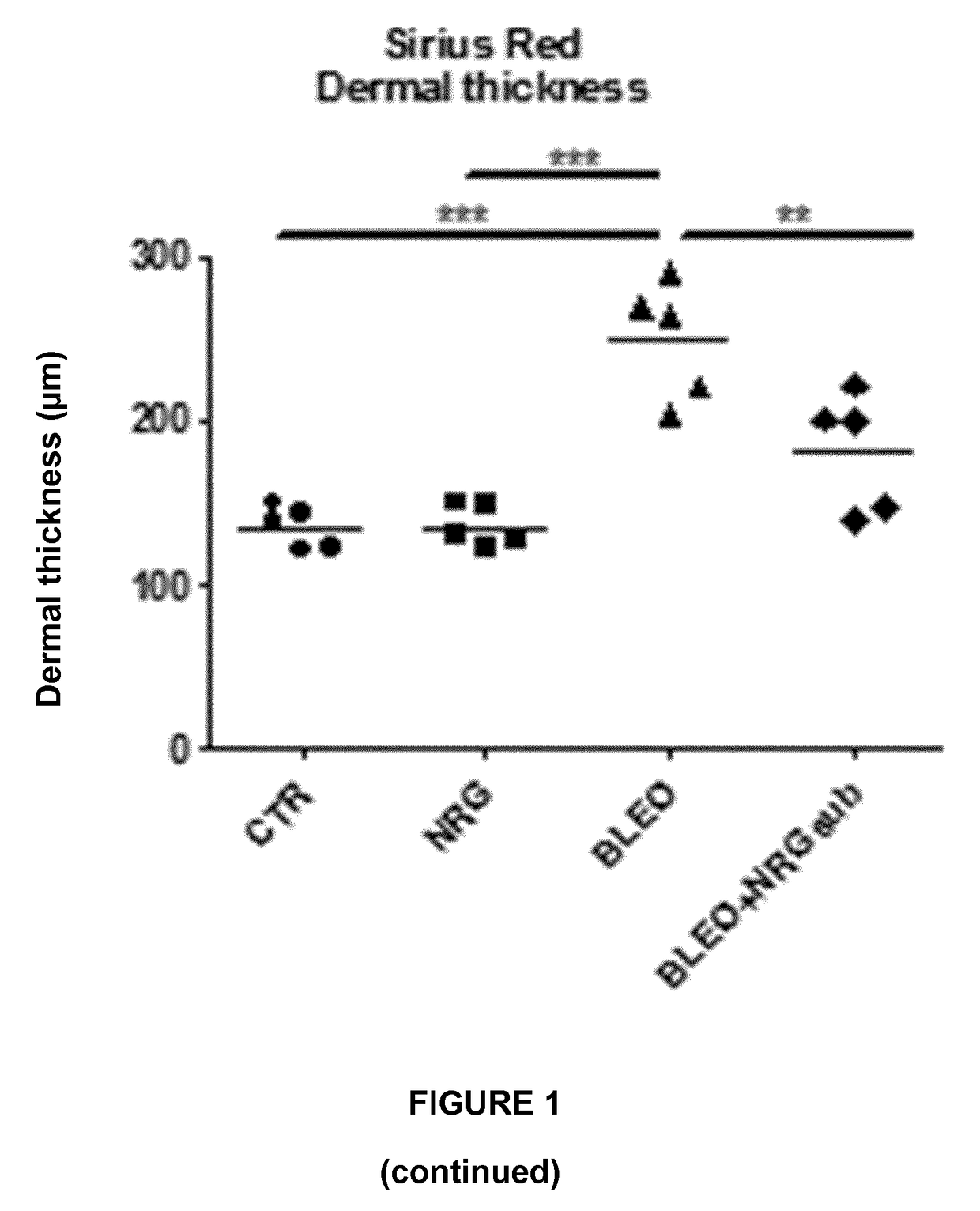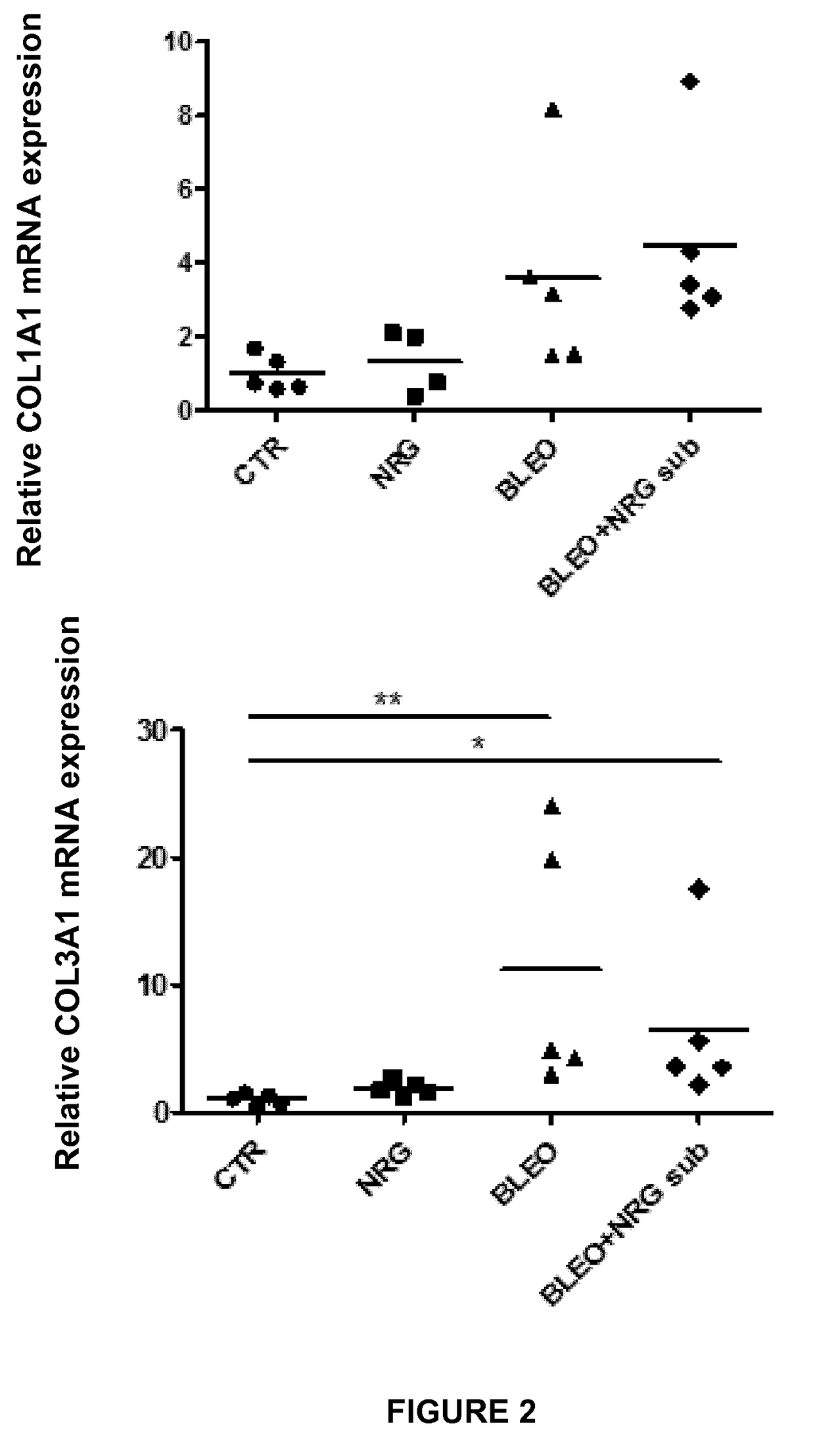Neuregulin in the treatment of fibrotic disorders
a technology of neuregulin and fibrosis, which is applied in the direction of gene therapy, digestive system, peptide/protein ingredients, etc., can solve the problems of morbidity and mortality, pathogenic healing process, and formation of permanent fibrosis
- Summary
- Abstract
- Description
- Claims
- Application Information
AI Technical Summary
Benefits of technology
Problems solved by technology
Method used
Image
Examples
examples
[0091]I. Methods and Protocols
[0092]Experimental Animals and Study Designs
[0093]Animals
[0094]C57BL / 6 mice, aged 8 weeks and weighting 20 to 25 g, were obtained from The Jackson Laboratory. Mice were maintained under standard laboratory conditions, 12 hours light-dark cycles with access to normal chow and drinking water at libitum. All experiments performed are approved by the ethical committee of animals of the University of Antwerp and conform to the Guide for the Care and Use of Laboratory Animals published by the US National Institutes of Health (NIH Publication No. 85-23, revised 1996).
[0095]Study Design
Experiment A: Induction of Dermal and Lung Fibrosis
[0096]Fibrosis was induced in 8 week old female C57BL / 6 mice (n=40) by subcutaneous injection of bleomycin. Bleomycin was dissolved in phosphate-buffered saline (PBS; 0.01 M, pH 7.4) at a concentration of 0.5 mg / mL and 100 μL was administered 5 days a week during 4 weeks by subcutaneous injection in defined areas of the upper bac...
experiment a
[0121]Data are expressed as means±SEM. Differences between groups were analyzed by one-way ANOVA with Bonferroni post-hoc test. Western blots were subjected to densitometric analysis using ImageJ 1.42 software. Statistical significance was defined as P<0.05. All statistical analyses were done using Graph Pad Prism 5 and IBM SPSS Statistics 22 software.
experiment b
[0122]Data are expressed as means±SEM. Differences between groups were analyzed by one-way or two-way ANOVA with Bonferroni corrections for multiple comparisons. Western blots were subjected to densitometric analysis using ImageJ 1.42 software. Mortality was analyzed using the Gehan-Breslow-Wilcoxon test. Statistical significance was defined as P<0.05. All statistical analyses were done using GraphPad Prism 5 and IBM SPSS Statistics 22.
[0123]II. Results
PUM
| Property | Measurement | Unit |
|---|---|---|
| concentration | aaaaa | aaaaa |
| pH | aaaaa | aaaaa |
| density | aaaaa | aaaaa |
Abstract
Description
Claims
Application Information
 Login to View More
Login to View More - R&D
- Intellectual Property
- Life Sciences
- Materials
- Tech Scout
- Unparalleled Data Quality
- Higher Quality Content
- 60% Fewer Hallucinations
Browse by: Latest US Patents, China's latest patents, Technical Efficacy Thesaurus, Application Domain, Technology Topic, Popular Technical Reports.
© 2025 PatSnap. All rights reserved.Legal|Privacy policy|Modern Slavery Act Transparency Statement|Sitemap|About US| Contact US: help@patsnap.com



